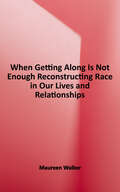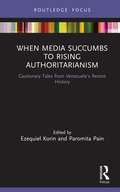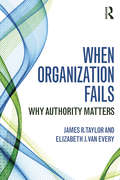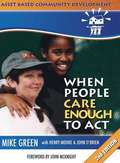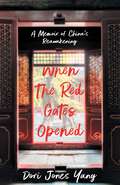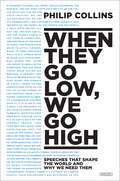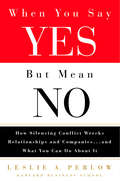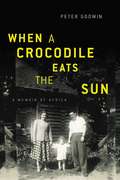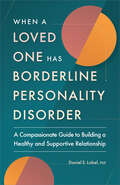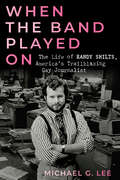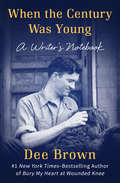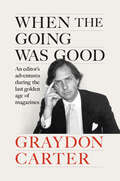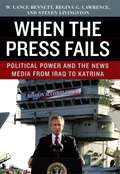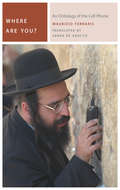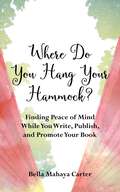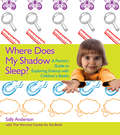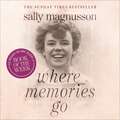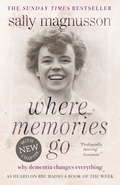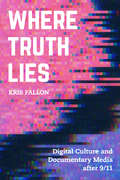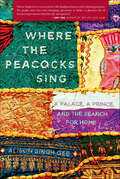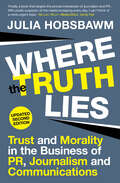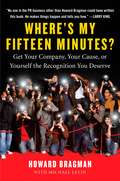- Table View
- List View
When Getting Along is not Enough: Reconstructing Race in Our Lives and Relationships
by Maureen Walker“Using anecdotes from her psychology practice, Walker provides a way for educators and social service professionals to enter into cross-racial discussions about race and racial relations. She identifies skills that are essential for repairing the damage wrought by racism and provides exercises to stimulate group conversations in staff development, classrooms, and workplace training”-- Provided by publisher.
When Media Succumbs to Rising Authoritarianism: Cautionary Tales from Venezuela’s Recent History (Routledge Focus on Journalism Studies)
by Ezequiel Korin and Paromita PainThis book provides a transversal scholarly exploration of the multiple changes exhibited around Venezuelan media during the Chávez regime. Bringing together a body of original research by key scholars in the field, the book looks at the different processes entailed by Chavismo’s relationship with the media, extending their discussion beyond the boundaries of the specific cases or examples and into the entire articulation of a nearly-perfect communicational hegemony. It explores the wide-ranging transformations in the national mediascape, such as how censorship of journalistic endeavors has impacted news consumption/production in the country to the complexities of Venezuelan filmmaking during Chavismo, from the symbolic postmortem persistence of Chávez to the profound transformations undergone by telenovelas, from the politically induced migration of online audiences to the reinvention of media spaces for cultural journalism as forms of resistance. Allowing readers to engage not only with the particular case studies or exemplars presented, but with the underlying cultural, economic, political, societal, and technical aspects that come into play and which allow the extrapolation of this body of research onto other national or international contexts, this book will be an important resource for scholars and students of journalism, communication, media studies, and politics.
When Old Technologies Were New: Thinking About Electric Communication in the Late Nineteenth Century
by Carolyn MarvinThis book uses two innovations, the telephone and the electric light, to show how technology drastically altered the social order and economies of industrial nations and reshaped social relations.
When Organization Fails: Why Authority Matters
by James R. Taylor Elizabeth J. Van EveryWhen Organization Fails: Why Authority Matters develops the study of authority as an area of investigation in organizational communication and management. As a research topic, authority has rarely been addressed in depth in the management and organizational communication literature. It is critical, however, to maintaining unity of purpose and action of the organization, and it is frequently cited by organizational members themselves. Utilizing two case studies, examined in depth and based on the accounts of the individuals involved, authors James R. Taylor and Elizabeth J. van Every explore the pathology of authority when it fails. They develop a theoretical foundation that aims to illuminate authority by positioning it in communication theory. This volume sets the stage for a new generation of scholars who can make their reputations as experts on authority, and is intended for scholars and graduate students in organizational communication, leadership, and discourse analysis. It also offers practical insights to consultants and management experts worldwide.
When People Care Enough to Act (Second Edition)
by Mike Green Henry Moore John W. O'BrienEnriching each other, this book provides a clear exposition of ABCD (Asset Based Community Development) organizing principles & best practices for community partnership. Examples of ABCD in Action, learning exercises, worksheets, and reflections from experienced practitioners of ABCD community building. A practical approach to creating community collaborations that work. Reflections by John McKnight; Lessons from Ashville, NC; Marquette, MI; Laconia, NH; Savannah, GA; Ames, IA.
When Robots Hug (Science and Fiction)
by James A. Crowder Alan C. CrowderBy 2027, it had been seven years since the scientists’ sea-changing research on artificial psychology and robotics. The work debuted around the same time as Large Language Model Chatbots, and the power of the integration of the two technologies put many industries in a tailspin. The commercial and defense industries especially were still scrambling to regulate their use in research and universities. The sought-after scientists signed with DARPA to build reliable and secure AI entities, but the agency grew fearful of the technology’s power and ultimately decided it was too dangerous to bring to market and demanded the scientists destroy the work. The researchers couldn’t bring themselves to discard 20 years of research, so instead sent the entities to various research labs around the world. But unbeknownst to them, each AI-entity embraced its new home, growing, adapting, evolving, and ultimately connecting beyond what the researchers could envision. In the end, as the scientists catch up to each one, they realize the entities have discovered a very human means of interacting: the power of physical contact; and not physical contact between humans and technology, but physical contact between robotic entities. And with this discovery, the entities join forces to only grow stronger. This development ushers in a new paradigm where the difference between AI-entities and human entities becomes less and less discernible. All the AI and robotic science featured in the book is real; the story line is fictional, but with how fast innovation moves, it’s not hard to envision.
When The Red Gates Opened: A Memoir of China's Reawakening
by Dori Jones YangA Riveting Memoir of Cross-Cultural Romance at a Pivotal Moment in History When China opened its doors in the 1980s, it shocked the world by allowing private enterprise and free markets. As a foreign correspondent for BusinessWeek, Dori Jones Yang was among the first American journalists to cover China under Deng Xiaoping, who dared to defy Maoist doctrine as he rushed to catch up with richer nations. Fluent in Mandarin, she got to know ordinary Chinese people—who were embracing opportunities that had once been unimaginable in China. This deeply personal story follows her rise from rookie reporter to experienced journalist. Her cross-cultural romance gave her deeper insights into how Deng&’s reforms led to hopes for better lives. This euphoria—shared by American businesses and Chinese citizens alike—reached its peak in 1989, when peaceful protestors filled Tiananmen Square, demanding democracy. On the ground in Beijing, Dori lived that hope, as well as the despair that followed. You&’ll be inspired by this book of empowerment about a young woman from Ohio who pushed aside barriers to become a foreign correspondent and then persevered despite setbacks. Written in a time when China&’s rapid rise is setting off fears in Washington, this book offers insight into the daring policies that started it all.
When They Go Low, We Go High: Speeches That Shape the World and Why We Need Them
by Philip CollinsCan a good speech save democracy? “Anyone interested in the past, present and future of speeches and speechwriting will find [this] a fascinating read.” —The SpectatorWhen First Lady Michelle Obama approached the podium at the 2016 Democratic National Convention, nobody could have predicted that her rousing line “When they go low, we go high” would become the motto for the political left and an anthem for opponents of oppression worldwide. It was a speech with the kind of emotional pull rarely heard these days, joining a long list of addresses that have made history. But what was it that made this speech so great?When They Go Low, We Go High explores the most notable speeches in history, analyzing the rhetorical techniques to uncover how the right speech at the right time can profoundly shape the world. Traveling across continents and centuries, political speechwriter Philip Collins reveals what Thomas Jefferson owes to Cicero and Pericles; who really gave the Gettysburg Address; and what Elizabeth I shares with Winston Churchill. In telling the stories of famous and sometimes infamous speeches—including those from Lincoln, Woodrow Wilson, JFK, Martin Luther King, Jr., Disraeli, Hitler, Elie Wiesel, Margaret Thatcher, and Barack and Michelle Obama—Collins breathes new life into words you thought you knew well, telling the story of democracy. Whether it’s the inaugural addresses of presidents or the revolutionary writings of Castro, Pankhurst, and Mandela, Collins illuminates and contextualizes these moments with sensitivity and humor. When They Go Low, We Go High examines the power of public speaking and serves as an urgent reminder that words can change the world.“Hits on three unassailable truths: rhetoric and democracy must go hand-in-hand; democracy, for all of its flaws, is superior to tyranny; and democracy is currently under assault.” —Paste“Collins . . . understands intimately the mechanics of rhetoric. He believes that we, as human beings, possess the capacity to extract ourselves from the swamp in which we have sunk.” —The Times
When You Say Yes But Mean No: How Silencing Conflict Wrecks Relationships and Companies... and What You Can Do About It
by Leslie PerlowWe live in a culture—especially at work—that prefers harmony over discord, agreement over dissent, speed over deliberation. We often smile and nod to each other even though deep down we could not disagree more. Whether with colleagues, friends, or family members, the tendency to paper over differences rather than confront them is extremely common. We believe that the best thing to do to preserve our relationships and to ensure that our work gets done as expeditiously as possible is to silence conflict. Let’s face it, most bosses don’t encourage us to share our differences. Indeed, many people are taught that loyal employees accept corporate values, policies, and decisions—never challenging or questioning them. If we want to hold on to our jobs and move up in our organizations, stifling conflict is the safest way to do it—or so we believe.And it is not just with our bosses that we fear raising a dissenting opinion. We worry about what our peers and even our subordinates may think of us. We don’t want to embarrass ourselves or create a bad impression. We don’t want to lose others’ respect or risk rejection.We often associate conflict with its negative form—petty bickering, heated arguing, a bloody fight. But conflict can also be a source of creative energy; when handled constructively by both parties, differences can lead to a healthy and fruitful collaboration, creation, or construction of new knowledge or solutions. When we silence conflict, we avoid the possibility of negative conflict, but we also miss the potential for constructive conflict.Worse yet, as Leslie Perlow documents, the act of silencing conflict may create the consequences we most dread. Tasks frequently take longer or never get done successfully, and silencing conflict over important issues with people for whom we care deeply can result in disrespect for, and devaluing of, those same people. Each time we silence conflict, we create an environment in which we’re all the more likely to be silent next time. We get caught in a vicious “silent spiral,” making the relationship progressively less safe, less satisfying, and less productive. Differences get glossed over, patched over, and suppressed . . . until disaster happens. “Saying yes when you really mean no” is a problem that haunts organizations from start-ups to multi-nationals. It exists across industries, levels, and functions. And it’s exacerbated by a down economy, when the fear of losing one’s job is on everybody’s mind and the idea of allowing conflict to surface or disagreeing with others seems particularly risky. All too often, the conversation at work bespeaks harmony and togetherness, even though passionate disagreements exist beneath the surface. Leslie A. Perlow is a corporate ethnographer, an anthropologist of corporate culture. Anthropologists like Margaret Mead spend years in the field studying exotic cultures. Perlow does the same, although the field for her is the office and the exotic people are us—those who work in the world of organizations. But the end result is no less surprising or rich in insight. Whether it’s a Fortune 500 firm, small business, or government bureaucracy, Perlow provides a keen understanding of the hidden issues behind what people say (and don’t say). And more important, she shows how to create relationships where individuals feel empowered to express their genuine thoughts and feelings and to harness the power of positive conflict.
When a Crocodile Eats the Sun: A Memoir of Africa
by Peter GodwinAfter his father's heart attack in 1984, Peter Godwin began a series of pilgrimages back to Zimbabwe, the land of his birth, from Manhattan, where he now lives. On these frequent visits to check on his elderly parents, he bore witness to Zimbabwe's dramatic spiral downwards into the jaws of violent chaos, presided over by an increasingly enraged dictator. And yet long after their comfortable lifestyle had been shattered and millions were fleeing, his parents refuse to leave, steadfast in their allegiance to the failed state that has been their adopted home for 50 years. Then Godwin discovered a shocking family secret that helped explain their loyalty. Africa was his father's sanctuary from another identity, another world. WHEN A CROCODILE EATS THE SUN is a stirring memoir of the disintegration of a family set against the collapse of a country. But it is also a vivid portrait of the profound strength of the human spirit and the enduring power of love. A Readers Guide is included, which contains an interview with the author and discussion questions.
When a Loved One Has Borderline Personality Disorder: A Compassionate Guide to Building a Healthy and Supportive Relationship
by Daniel S. Lobel PhDSupport yourself and your loved one living with borderline personality disorder Loving someone with borderline personality disorder (BPD) can be complex and overwhelming. This guide provides compassionate strategies and exercises to help you set boundaries, practice self-care, and build a healthier and more supportive relationship. This top choice in borderline personality disorder books helps you to: Understand BPD—Learn more about what BPD is and how it affects your loved one, your relationship, and you personally. Consider their perspective—Explore how your loved one might feel in specific scenarios and how those feelings motivate their behavior. Care for yourself—Acknowledge your emotions, and discover a variety of ways to seek support and make time for yourself. Take action—Discover tips and techniques for communicating effectively with your loved one, as well as writing prompts to help you apply the strategies you learn to your relationship. Pick up this standout among BPD books and get the tools you need to create balance and harmony in your relationship.
When the Band Played On: The Life of Randy Shilts, America's Trailblazing Gay Journalist
by Michael G. LeeRandy Shilts was the preeminent LGBTQ+ reporter of his generation. He was the first openly gay reporter assigned to a gay beat at a mainstream paper and one of the nation's most influential chroniclers of gay history, politics, and culture. Shilts wrote three seminal works on the community: The Mayor of Castro Street, on the life, assassination, and legacy of Harvey Milk; And the Band Played On, detailing the failure of politics as usual during the early AIDS epidemic; and Conduct Unbecoming, a history of the US military's mistreatment of LGBTQ servicemembers. Yet the intimate life story of Randy Shilts has been left unwritten. When the Band Played On tells that story, recognizing his legacy as a trailblazing figure in gay activism, journalism, and public policy. Author Michael G. Lee conducted interviews with Shilts's family, friends, college professors, colleagues, informants, lovers, and critics. The resulting narrative tells the tale of a singularly gifted voice, a talented yet insecure young man whose coming of age became intricately linked to the historic peaks and devastating perils of modern gay liberation. When the Band Played On is the authoritative account of Randy Shilts's trailblazing life, as well as his legacy of shaping the history-making events he covered.
When the Century Was Young: A Writer's Notebook
by Dee BrownThe insightful and heartwarming memoir of one of twentieth-century America&’s most celebrated frontier writersDee Brown&’s fascinating memoir describes a writer&’s evolution—and a time when catching rides on trains or seeing the landing of a Curtiss Jenny airplane were simple and profound pleasures. Brown traces his upbringing in Arkansas in the early 1900s, and the oil boom that hit his tiny town. He writes of how he fell under the spell of books and history, and of his eventual work as a journalist and printer before finding his true love—the American West—which would lead to his penning the classic Bury My Heart at Wounded Knee. Written with gentle humor and a scholar&’s curiosity, When the Century Was Young is a wistful look at youth during a poignant moment in American history. This ebook features an illustrated biography of Dee Brown including rare photos from the author&’s personal collection.
When the Going Was Good: An Editor's Adventures During the Last Golden Age of Magazines
by Graydon CarterAn Instant New York Times BestsellerFrom the pages of Vanity Fair to the red carpets of Hollywood, editor Graydon Carter&’s memoir revives the glamorous heyday of print magazines when they were at the vanguard of American cultureWhen Graydon Carter was offered the editorship of Vanity Fair in 1992, he knew he faced an uphill battle—how to make the esteemed and long-established magazine his own. Not only was he confronted with a staff that he perceived to be loyal to the previous regime, but he arrived only a few years after launching Spy magazine, which gloried in skewering the celebrated and powerful—the very people Vanity Fair venerated. With curiosity, fearlessness, and a love of recent history and glamour that would come to define his storied career in magazines, Carter succeeded in endearing himself to his editors, contributors, and readers, as well as as well as those who would grace the pages of Vanity Fair. He went on to run the magazine with overwhelming success for the next two and a half decades.Filled with colorful memories and intimate details, When the Going Was Good is Graydon Carter&’s lively recounting of how he made his mark as one of the most talented editors in the business. Moving to New York from Canada, he worked at Time, Life, The New York Observer, and Spy, before catching the eye of Condé Nast chairman Si Newhouse, who pulled him in to run Vanity Fair. In Newhouse he found an unwavering champion, a loyal proprietor who gave Carter the editorial and financial freedom to thrive. Annie Leibovitz&’s photographs would come to define the look of the magazine, as would the &“New Establishment&” and annual Hollywood issues. Carter further planted a flag in Los Angeles with the legendary Vanity Fair Oscar party.With his inimitable voice and signature quip, he brings readers to lunches and dinners with the great and good of America, Britain, and Europe. He assembled one of the most formidable stables of writers and photographers under one roof, and here he re-creates in real time the steps he took to ensure Vanity Fair cemented its place as the epicenter of art, culture, business, and politics, even as digital media took hold. Charming, candid, and brimming with stories, When the Going Was Good perfectly captures the last golden age of print magazines from the inside out.
When the Press Fails: Political Power and the News Media from Iraq to Katrina
by W. Lance Bennett Regina G. Lawrence Steven LivingstonDrawing on revealing interviews with Washington insiders and analysis of content from major news outlets, the authors illustrate the media unilaterally supported White House whenever oppositional voices elsewhere in government fall silent.
Where Are You?: An Ontology of the Cell Phone (Commonalities)
by Maurizio FerrarisThis book sheds light on the most philosophically interesting of contemporary objects: the cell phone. “Where are you?”—a question asked over cell phones myriad times each day—is arguably the most philosophical question of our age, given the transformation of presence the cell phone has wrought in contemporary social life and public space.Throughout all public spaces, cell phones are now a ubiquitous prosthesis of what Descartes and Hegel once considered the absolute tool: the hand. Their power comes in part from their ability to move about with us—they are like a computer, but we can carry them with us at all times—in part from what they attach to us (and how), as all that computational and connective power becomes both handy and hand-sized.Quite surprisingly, despite their name, one might argue, as Ferraris does, that cell phones are not really all that good for sound and speaking. Instead, the main philosophical point of this book is that mobile phones have come into their own as writing machines—they function best for text messages, e-mail, and archives of allkinds. Their philosophical urgency lies in the manner in which they carry us from the effects of voice over into reliance upon the written traces that are, Ferraris argues, the basic stuff of human culture.Ontology is the study of what there is, and what there is in our age is a huge network of documents, papers, and texts of all kinds. Social reality is not constructed by collective intentionality; rather, it is made up of inscribed acts. As Derrida already prophesized, our world revolves around writing. Cell phones have attached writing to our fingers and dragged it into public spaces in a new way. This is why, with their power to obliterate or morph presence and replace voice with writing, the cell phone is such a philosophically interesting object.
Where Do You Hang Your Hammock?: Finding Peace of Mind While You Write, Publish, and Promote Your Book
by Bella Mahaya CarterIn Where Do You Hang Your Hammock? seasoned coach and author Bella Mahaya Carter shows writers how to use their present circumstances as stepping-stones to a successful and meaningful writing life, navigated from the inside out. It encourages writers and authors to rethink their ambitions (which may be fueled by the tyrannical demands of the ego) and trust in their heartfelt purpose and values in the journey to becoming, or continuing on, as authors.Many writers believe their self-sabotaging thoughts are trustworthy and true. They take rejection personally. They surmise that if they don&’t achieve their goals they have failed, and lose sight of who they are and what matters most.This book is for writers looking for inspiration and for authors daunted by the publishing process, who might lack the requisite author platform to get published the way they dreamed, or whose careers may not be unfolding as expected. It aims to be the friend and trusted expert writers turn to when hijacked by their own thinking. Ultimately, it reminds authors that they are infinite creators.
Where Does My Shadow Sleep?: A Parent's Guide to Exploring Science with Children's Books
by Sally AndersonUse your child’s favorite books to explore and investigate the world of science!Young children are investigators by nature, just like scientists. They question our world, asking Why? How? When? and What if? They are curious about our climate and the creatures that occupy our Earth. They make predictions and use materials and tools in creative, new ways. They even problem solve and experiment as they process new ideas.With the help of the stories and activities in Where Does My Shadow Sleep? take the time to watch, wonder, ask questions, talk about, and explore the world of science with your child. Use favorite children’s books to investigate animals and insects, learn how plants grow and change, and discover how shadows grow and shrink.With four chapters that cover a multitude of themes, it’s never been easier to deepen your child’s understanding of important science and reading concepts at the same time!
Where Memories Go: Why Dementia Changes Everything
by Sally MagnussonThis book began as an attempt to hold on to my witty, storytelling mother with the one thing I had to hand. Words. Then, as the enormity of the social crisis my family was part of began to dawn, I wrote with the thought that other forgotten lives might be nudged into the light along with hers. Dementia is one of the greatest social, medical, economic, scientific, philosophical and moral challenges of our times. I am a reporter. It became the biggest story of my life.Sally MagnussonRegarded as one of the finest journalists of her generation, Mamie Baird Magnusson's whole life was a celebration of words - words that she fought to retain in the grip of a disease which is fast becoming the scourge of the 21st century. Married to writer and broadcaster Magnus Magnusson, they had five children of whom Sally is the eldest. As well as chronicling the anguish, the frustrations and the unexpected laughs and joys that she and her sisters experienced while accompanying their beloved mother on the long dementia road for eight years until her death in 2012, Sally Magnusson seeks understanding from a range of experts and asks penetrating questions about how we treat older people, how we can face one of the greatest social, medical, economic and moral challenges of our times, and what it means to be human.An extraordinary and deeply personal memoir, a manifesto and a call to arms, in one searingly beautiful narrative.Find out more about the book and dementia at Facebook.com/WhereMemoriesGo(P)2014 John Murray Press
Where Memories Go: Why dementia changes everything - Now with a new chapter
by Sally MagnussonThis book began as an attempt to hold on to my witty, storytelling mother with the one thing I had to hand. Words. Then, as the enormity of the social crisis my family was part of began to dawn, I wrote with the thought that other forgotten lives might be nudged into the light along with hers. Dementia is one of the greatest social, medical, economic, scientific, philosophical and moral challenges of our times. I am a reporter. It became the biggest story of my life. - Sally Magnusson Regarded as one of the finest journalists of her generation, Mamie Baird Magnusson's whole life was a celebration of words - words that she fought to retain in the grip of a disease which is fast becoming the scourge of the 21st century. Married to writer and broadcaster Magnus Magnusson, they had five children of whom Sally is the eldest. As well as chronicling the anguish, the frustrations and the unexpected laughs and joys that she and her sisters experienced while accompanying their beloved mother on the long dementia road for eight years until her death in 2012, Sally Magnusson seeks understanding from a range of experts and asks penetrating questions about how we treat older people, how we can face one of the greatest social, medical, economic and moral challenges of our times, and what it means to be human. An extraordinary and deeply personal memoir, a manifesto and a call to arms, in one searingly beautiful narrative. Find out more about the book and dementia at Facebook.com/WhereMemoriesGo
Where Memories Go: Why dementia changes everything - Now with a new chapter
by Sally Magnusson'A fine book' The Sunday Times 'Powerful' Guardian 'Wonderful' The Telegraph'Moving, funny, warm' Mail on Sunday'Brave, compassionate, tender and honest' Metro'This book began as an attempt to hold on to my witty, storytelling mother with the one thing I had to hand. Words. Then, as the enormity of the social crisis my family was part of began to dawn, I wrote with the thought that other forgotten lives might be nudged into the light along with hers. Dementia is one of the greatest social, medical, economic, scientific, philosophical and moral challenges of our times. I am a reporter. It became the biggest story of my life.' Sally MagnussonSad and funny, wise and honest, Where Memories Go is a deeply intimate account of insidious losses and unexpected joys in the terrible face of dementia, and a call to arms that challenges us all to think differently about how we care for our loved ones when they need us most.Regarded as one of the finest journalists of her generation, Mamie Baird Magnusson's whole life was a celebration of words - words that she fought to retain in the grip of a disease which is fast becoming the scourge of the 21st century. Married to writer and broadcaster Magnus Magnusson, they had five children of whom Sally is the eldest. As well as chronicling the anguish, the frustrations and the unexpected laughs and joys that she and her sisters experienced while accompanying their beloved mother on the long dementia road for eight years until her death in 2012, Sally Magnusson seeks understanding from a range of experts and asks penetrating questions about how we treat older people, how we can face one of the greatest social, medical, economic and moral challenges of our times, and what it means to be human.Facebook.com/WhereMemoriesGo
Where Truth Lies: Digital Culture and Documentary Media after 9/11
by Kris FallonA free open access ebook is available upon publication. Learn more at www.luminosoa.org. This boldly original book traces the evolution of documentary film and photography as they migrated onto digital platforms during the first decades of the twenty-first century. Kris Fallon examines the emergence of several key media forms—social networking and crowdsourcing, video games and virtual environments, big data and data visualization—and demonstrates the formative influence of political conflict and the documentary film tradition on their evolution and cultural integration. Focusing on particular moments of political rupture, Fallon argues that the ideological rifts of the period inspired the adoption and adaptation of newly available technologies to encourage social mobilization and political action, a function performed for much of the previous century by independent documentary film. Positioning documentary film and digital media side by side in the political sphere, Fallon asserts that "truth" now lies in a new set of media forms and discursive practices that implicitly shape the documentation of everything from widespread cultural spectacles like wars and presidential elections to more invisible or isolated phenomena like the Abu Ghraib torture scandal or the "fake news" debates of 2016.
Where the Peacocks Sing: A Palace, a Prince, and the Search for Home
by Alison Singh GeeA journalist recounts her romantic journey from Hong Kong’s jet set to a small Indian village—where she discovers her Prince Charming is an actual prince. Alison Singh Gee was a glamorous magazine writer with a serious Jimmy Choo habit, a weakness for five-star Balinese resorts, and a reputation for dating highborn British men. Then she met Ajay, a charming and unassuming Indian journalist, and her world turned upside down. Traveling from her shiny, rapid-fire life in Hong Kong to Ajay’s native village, Alison learns that not all is as it seems. Turns out that Ajay is a landed prince (of sorts), but his family palace is falling to pieces. Replete with plumbing issues, strange noises, and intimidating relatives, her new love’s ramshackle palace, Mokimpur, is a broken-down relic in desperate need of a makeover. And Alison wonders if she can soldier on for the sake of the man who just might be her soul mate.This modern-day fairytale takes readers on a cross-cultural journey from the manicured gardens of Beverly Hills, to the bustling streets of Hong Kong and finally to the rural Indian countryside as Alison comes to terms with her complicated new family, leaves the modern world behind, and learns the true meaning of home.
Where the Truth Lies: Trust and Morality in the Business of PR, Journalism and Communications
by Julia HobsbawmThe relationship between the serious news media and the truth is under scrutiny as never before. In recent years, the BBC and the New York Times have been knocked sideways by scandals alleging exaggeration and distortion. At the same time, the influence of the PR industry continues to expand, so that no organization that is serious about communicating its message can be without a PR strategy. In a series of wide-ranging essays about public relations and journalism, this book tackles head-on issues as diverse as the public role of PR, the reportage of crises, and the role of "new" media. It also includes Julia Hobsbawm's four-point-plan to remake the relationship between PR and journalism. Contributors include John Lloyd, Simon Jenkins, Peter Oborne, Mark Borkowski, and Janine di Giovanni.
Where's My Fifteen Minutes?: Get Your Company, Your Cause, or Yourself the Recognition You Deserve
by Howard BragmanMedia attention can boost careers, generate millions of dollars, and make dreams come true. It can also destroy reputations and derail carefully laid business plans.<P><P> All publicity is not good publicity.No one knows this better than Howard Bragman. For more than thirty years he has helped prominent people--movie stars, business leaders, philanthropists-- get their messages out, in good times and bad.His book won't make anyone famous overnight, but it will help readers understand the changing world of today's PR.<P> If your public's perception doesn't match reality--if you are a better person, offer a better product, or stand for a better cause than anyone realizes-- you need help. Bragman shows how to: <P>Understand your real target audience <P>Respect what the media needs and wants <P>Give memorable interviews, even during a crisis <P>Handle the new challenges of the Internet age.<P>He illustrates his lessons with juicy examples, from Frank Sinatra and Madonna to Coca-Cola and Monica Lewinsky. Whether you're trying to build a business, advance your career, or change the world, there's much to be learned from Bragman's insights and experience.
